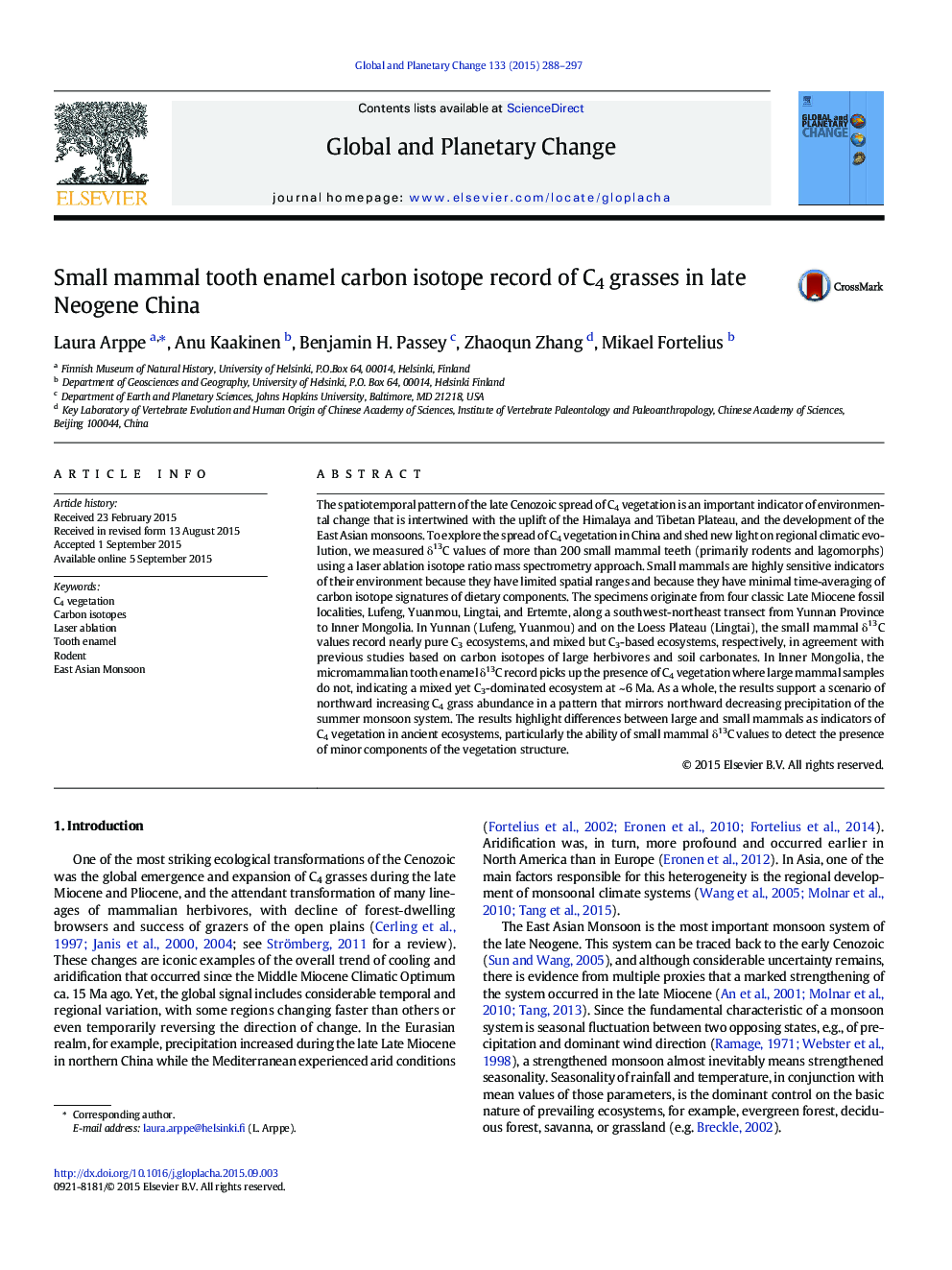| کد مقاله | کد نشریه | سال انتشار | مقاله انگلیسی | نسخه تمام متن |
|---|---|---|---|---|
| 6348078 | 1621649 | 2015 | 10 صفحه PDF | دانلود رایگان |
عنوان انگلیسی مقاله ISI
Small mammal tooth enamel carbon isotope record of C4 grasses in late Neogene China
دانلود مقاله + سفارش ترجمه
دانلود مقاله ISI انگلیسی
رایگان برای ایرانیان
کلمات کلیدی
موضوعات مرتبط
مهندسی و علوم پایه
علوم زمین و سیارات
فرآیندهای سطح زمین
پیش نمایش صفحه اول مقاله

چکیده انگلیسی
The spatiotemporal pattern of the late Cenozoic spread of C4 vegetation is an important indicator of environmental change that is intertwined with the uplift of the Himalaya and Tibetan Plateau, and the development of the East Asian monsoons. To explore the spread of C4 vegetation in China and shed new light on regional climatic evolution, we measured δ13C values of more than 200 small mammal teeth (primarily rodents and lagomorphs) using a laser ablation isotope ratio mass spectrometry approach. Small mammals are highly sensitive indicators of their environment because they have limited spatial ranges and because they have minimal time-averaging of carbon isotope signatures of dietary components. The specimens originate from four classic Late Miocene fossil localities, Lufeng, Yuanmou, Lingtai, and Ertemte, along a southwest-northeast transect from Yunnan Province to Inner Mongolia. In Yunnan (Lufeng, Yuanmou) and on the Loess Plateau (Lingtai), the small mammal δ13C values record nearly pure C3 ecosystems, and mixed but C3-based ecosystems, respectively, in agreement with previous studies based on carbon isotopes of large herbivores and soil carbonates. In Inner Mongolia, the micromammalian tooth enamel δ13C record picks up the presence of C4 vegetation where large mammal samples do not, indicating a mixed yet C3-dominated ecosystem at ~ 6 Ma. As a whole, the results support a scenario of northward increasing C4 grass abundance in a pattern that mirrors northward decreasing precipitation of the summer monsoon system. The results highlight differences between large and small mammals as indicators of C4 vegetation in ancient ecosystems, particularly the ability of small mammal δ13C values to detect the presence of minor components of the vegetation structure.
ناشر
Database: Elsevier - ScienceDirect (ساینس دایرکت)
Journal: Global and Planetary Change - Volume 133, October 2015, Pages 288-297
Journal: Global and Planetary Change - Volume 133, October 2015, Pages 288-297
نویسندگان
Laura Arppe, Anu Kaakinen, Benjamin H. Passey, Zhaoqun Zhang, Mikael Fortelius,